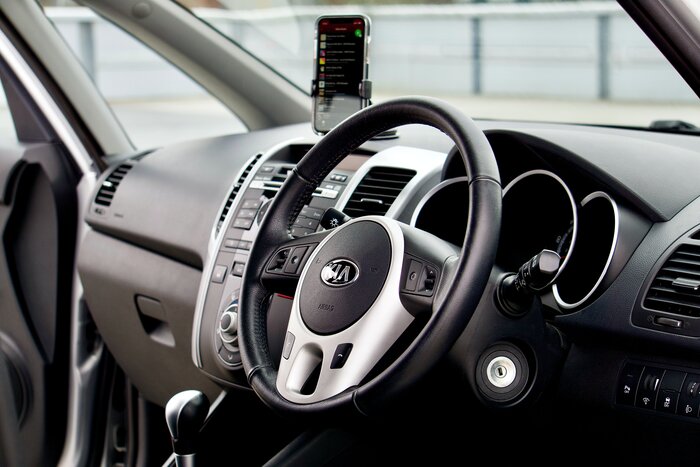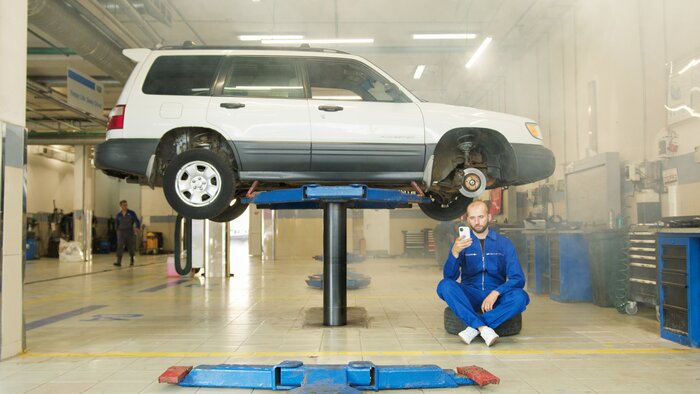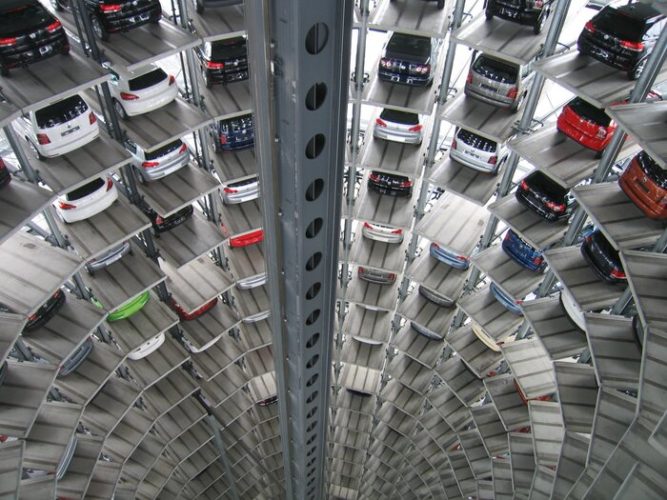A vehicle's transmission is its most complex component after the engine. But automatic transmissions don't get the attention that engines get, and that's a shame because the transmission in your vehicle is a beautiful piece of engineering when it's in good working order.
This mechanical symphony has many pieces, but what exactly makes it up? Check out this article to learn all about auto transmissions and their parts.
Automatic Transmission Components
All the parts of an automatic transmission are made up of many components. All automatic transmissions have these eight parts, and each of them is integral to the proper operation of your transmission.
You must know more than just the part names to understand how your vehicle moves.
1. Torque Converter
Vehicles with automatic transmissions do not have clutches but rather have torque converters. Torque converters perform the same function as clutches. When your transmission is still hooked up to the engine, you can't shift gears because otherwise, your transmission would snap. Thus, if you suspect that your torque converter might be faulty, you should fix it immediately.
With your torque converter, your engine stays running while you disconnect from the transmission - like depressing the clutch on a manual transmission to shift gears while the transmission is disconnected.
Even though torque converters do not have nut, bolt, or gear connections, an engine can be connected to the transmission. The connection is made through transmission fluid.
While the internal workings of a torque converter can be somewhat tricky, it's similar to how another one can power one fan. When you disconnect the first fan, the second one can be stopped easily without causing you any harm.
2. Oil Pump
The oil pump inside an auto transmission also works as well as any other oil pump. The tube feeds transmission fluid from the pan to the valve body, where it is directed to all the various components of the transmission.
Despite its simplicity, it is an integral part of a transmission and is one of the few components that will occasionally malfunction.
3. Planetary Gear Set
The gearbox of an automatic transmission is made up of one or more planetary gear sets, unlike a manual transmission, which has multiple gears.
Planetary gears consist of three sets of gears. There is a main gear called the sun gear on the planetary carrier. Planetary gears are the second set. These gears usually number three or more, with the sun gear and ring gear meshing together.
The planetary gears are connected by the ring gear, which encloses the entire system. It is designed so that two of the three gear sets can be locked at a time. The different gear sets allow for many gear ratios simply by locking the other gears into place.
As a result, the transmission can use a wide range of gears without using the setup that a manual transmission would need.
4. Clutch Packs
Manual transmissions require you to select the gear you wish to engage - auto transmissions are a little more complex. Transmissions don't have manual shifters but instead use clutch packs to attain the desired output ratio.
Multiple plates are compressed together in a clutch pack - when the oil pressure from the valve body is applied to the clutch pack, the clutch packs lock together, giving your desired output ratio. Different oil pressure levels engage different numbers of discs, which results in different gear ratios in the hub.
5. Output Shaft
Your transmission transfers power from the driveshaft to the hubs after it has completed all of its internal magic. Your transmission drives the driveshaft.
In general, it isn't the most complex part. The driveshaft connects via a yoke-type universal joint to a splined shaft on the other end connected to the auto transmission via a gear.
6. Brake Band
The brake bands only serve one purpose - holding planetary gears temporarily in place. The engine RPM and the gear ratio are synchronized during this period, allowing for smoother shifting.
The brake band works like a drum brake with a piston that squeezes the band around the drum. As the piston pushes harder, more brake force is applied.
7. Oil Pan
You'll also find an oil pan under your transmission, just as you would find one under your engine. The oil pan does exactly what you would expect it to do; it holds the excess transmission fluid (oil) for the oil pump to use when necessary. In most cases, it is equipped with a transmission fluid filter, either externally or internally.
It's one of the simplest elements of your transmission, but it also requires the most repair. There is often transmission fluid leakage around the oil pan, and the gaskets need to be replaced.
8. Valve Body
You have an ECU on your engine, and you have a valve body on your automatic transmission. To produce the best results, all of the pressure from the oil pump is directed to this component.
The valve body directs transmission fluid to every part of the transmission, including the torque converter and clutch packs.
In an automatic transmission, fluids are sent where they are needed by sensors that work directly with the transmission control module (TCM). This is one of the more complicated components in your transmission, but it is also the most important and should be tested with the best automotive multimeter in your toolbox.
How Automatic Transmission Works
Having a basic understanding of all the components of an automatic transmission does not mean that you understand how it works. There is nothing wrong with that.
Transmissions are complicated and technical components that are difficult to understand without someone guiding you through their inner workings. When you put your car into drive, your transmission kicks in.
It begins with the valve body receiving a signal from the TCM telling it to move in first gear. Everything goes into motion as the valve body directs transmission fluid to your clutch packs and torque converter.
For this to happen, your oil pump must start, pulling fluid from the transmission oil pan and pushing it into the valve body, which directs it to the required components. The planetary gear set then locks the ring gear, the first gear, and transmits power to the output shaft, driving everything into motion.
The brake band has not been used in your transmission so far. It doesn't start working until after the 1st gear, and it attempts to shift as smoothly as possible. Your transmission can engage the correct planetary gear without exerting a ton of force to shift gears, allowing the valve body to divert fluid away from the torque converter when shifting gears.
When your torque converter reengages, your brake band will automatically engage, allowing everything to accelerate smoothly. The valve body sends a different signal when it shifts to a lower gear; it works the same way your transmission shifts to a lower gear.
Are you interested in learning more about cars and their maintenance? Head over to the KeepDriving website and check out our blog post on how to remove small dents from car bonnet.







